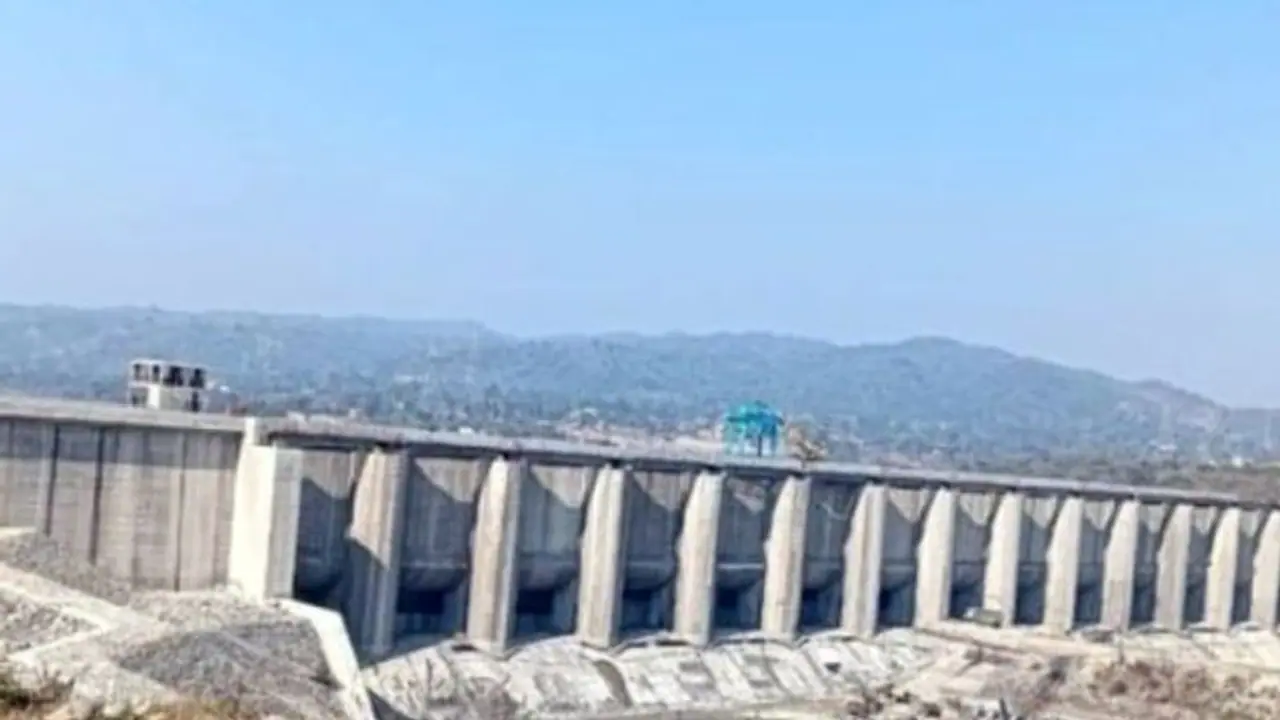The completion of the Shahpur Kandi Barrage marks a significant milestone in water resource management, halting the flow of the River Ravi to Pakistan and redirecting water for irrigation in Jammu and Kashmir (J&K) and Punjab
The completion of the Shahpur Kandi barrage, positioned at the border of Punjab and Jammu and Kashmir, marks a significant milestone as it effectively halts the flow of water from the River Ravi to Pakistan, media reports said on Saturday. This development signals a major shift in water management dynamics in the region, redirecting resources to bolster irrigation capabilities in the Kathua and Samba districts of J&K.

Official sources reveal that the Shahpur Kandi Irrigation and Hydel Power Generation Project, despite enduring numerous challenges spanning over three decades, has finally reached a pivotal stage. The initiation of the pondage process at Shahpur is a tangible manifestation of the project's progress, reflecting India's commitment to harnessing its water resources efficiently.
The project's significance lies not only in its potential to enhance agricultural productivity but also in its adherence to the Indus Water Treaty, allowing India to optimize the utilization of Ravi River water previously destined for Pakistan. This strategic redirection of water resources aligns with India's efforts to prioritize domestic development needs while fulfilling international obligations.
Originating from the foundation stone laid by former Prime Minister PV Narasimha Rao in 1995, the Shahpur Kandi Barrage Project encountered numerous hurdles, primarily stemming from disputes between the governments of J&K and Punjab. However, the steadfast determination of Prime Minister Narendra Modi, coupled with the intervention of Union MoS in the PMO, Dr. Jitendra Singh, facilitated the project's resumption in 2018 after a prolonged hiatus.
With an estimated cost of Rs 3300 crore, the Shahpur Kandi project stands as a testament to India's commitment to infrastructure development and water management initiatives. Beyond its immediate impact on irrigation, the project holds the promise of generating approximately 206 MW of electricity, further bolstering the region's energy security.
Union Minister of State in the Prime Minister’s Office, Dr Jitendra Singh, underscored the political complexities that impeded the project's progress, emphasizing previous governments' reluctance to prioritize the interests of the Samba and Kathua districts of the Jammu region. However, under Prime Minister Modi's leadership, the project attained national importance status, catalyzing its expeditious completion.
According to Executive Engineer Ajit Kumar, the commencement of the pondage process marks a critical phase in the project's timeline, with water from the Ranjeet Sagar Dam being channelled systematically to the Shahpur Kandi barrage. As construction progresses, the project is poised to significantly enhance irrigation capacity, benefiting over 32,000 hectares of agricultural land in the Kathua and Samba districts.
Despite challenges such as revisions in project costs and pending canal work, Kumar remains optimistic about the project's timely completion. Plans are underway for the Shahpur Kandi Power House to commence electricity generation by the end of the next year
